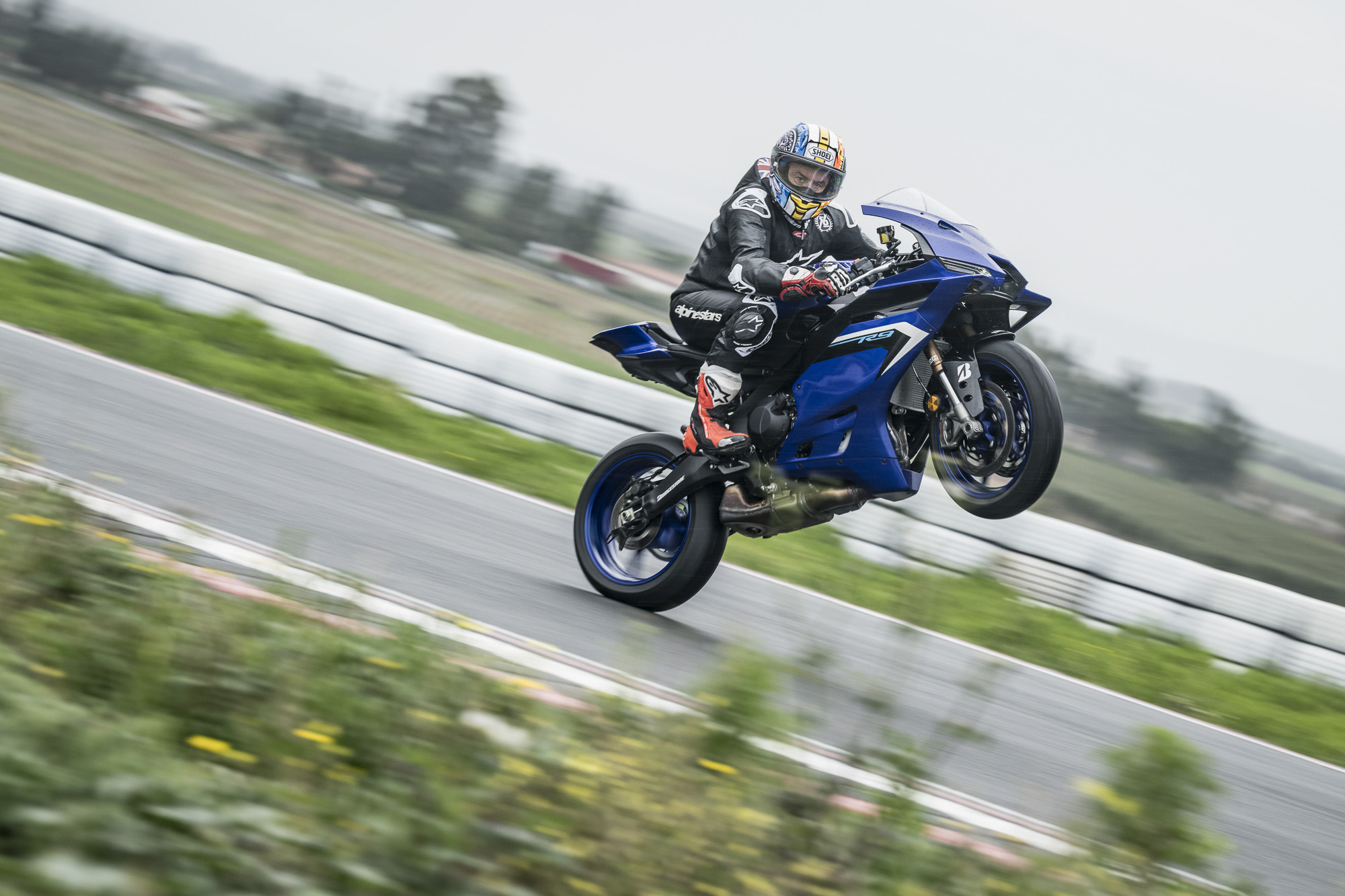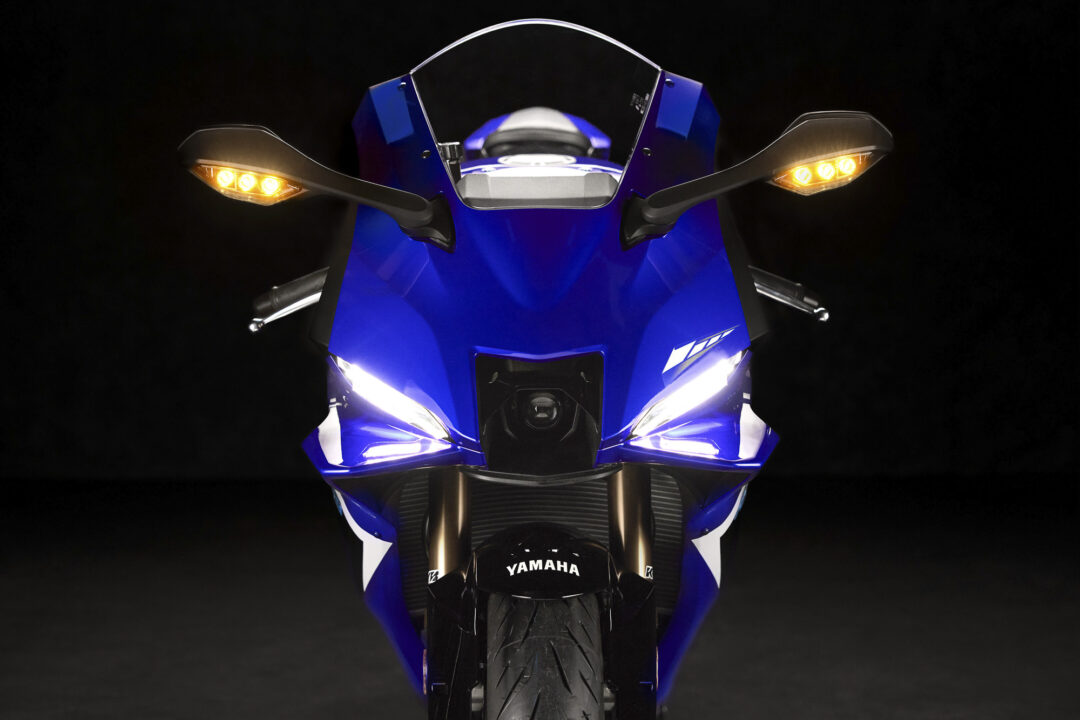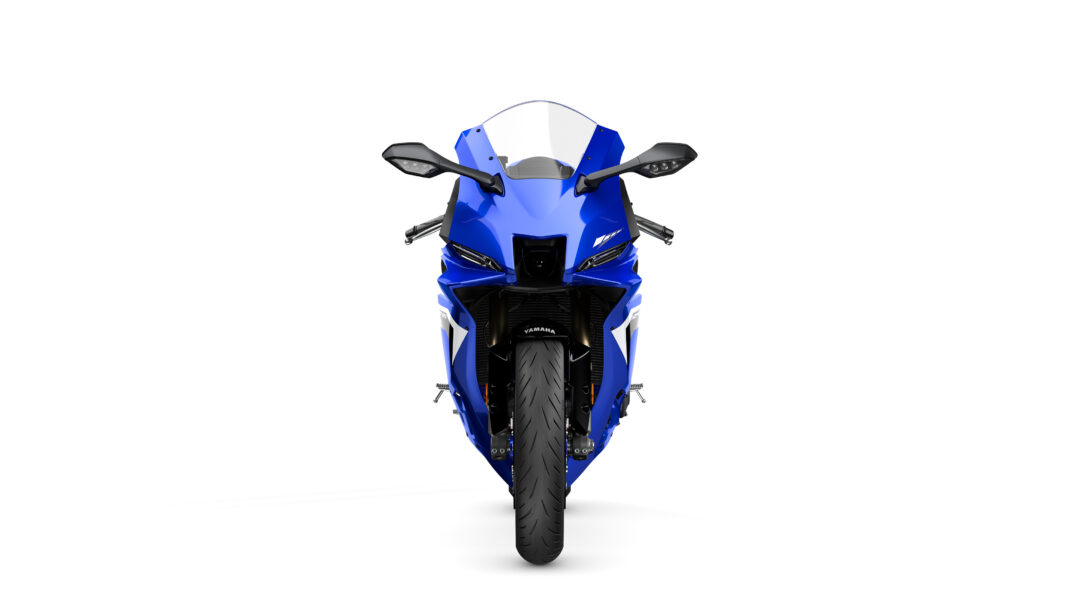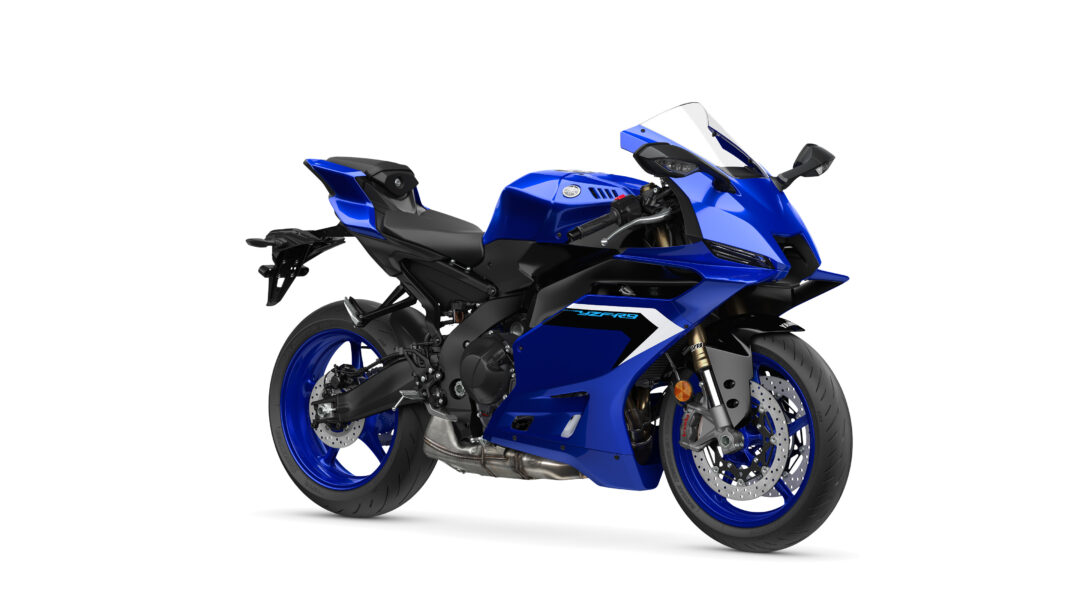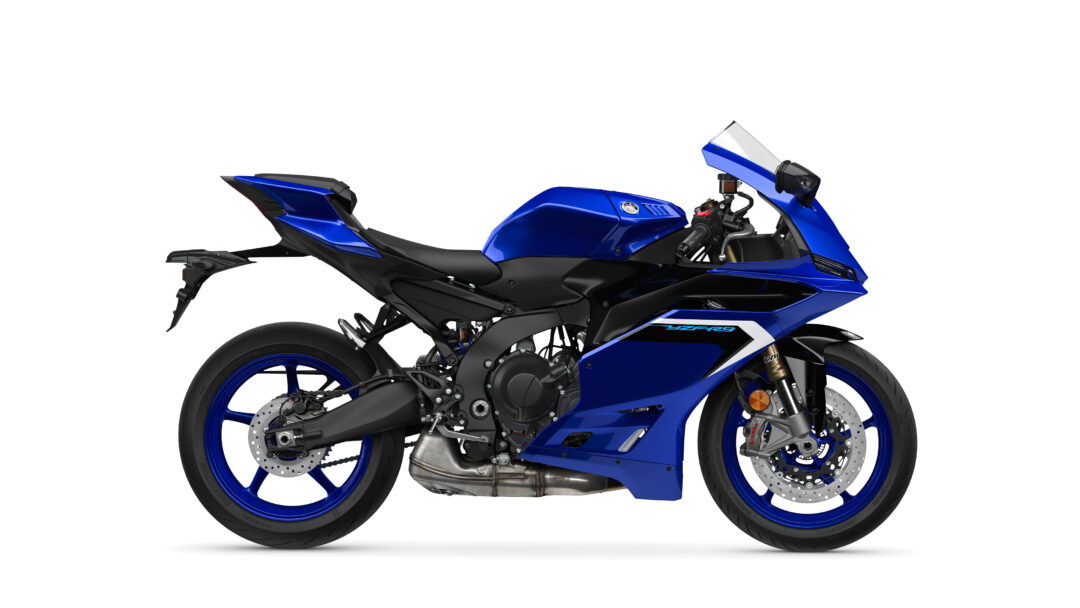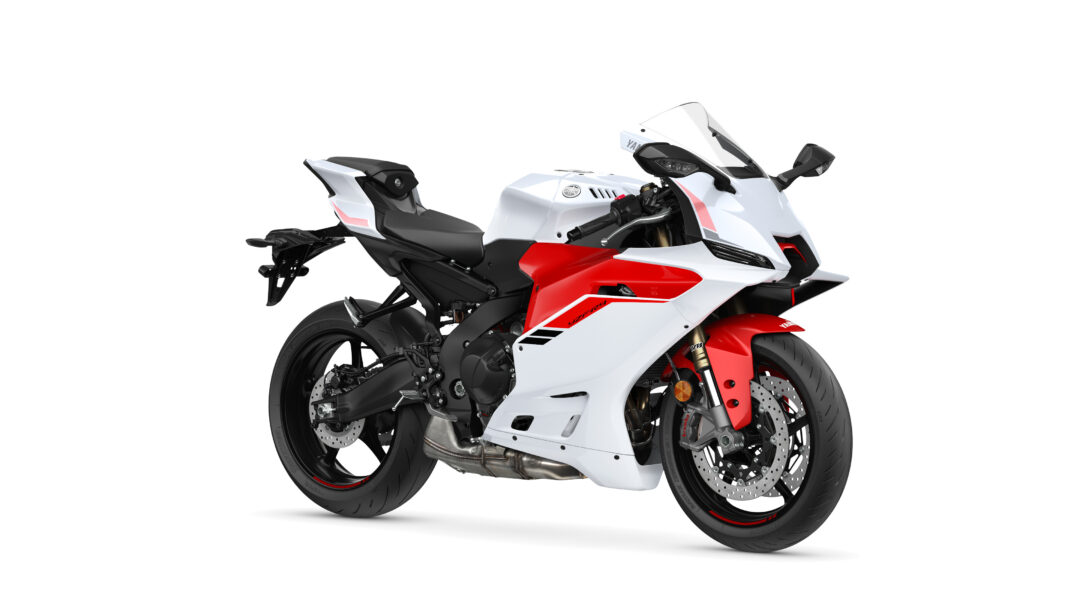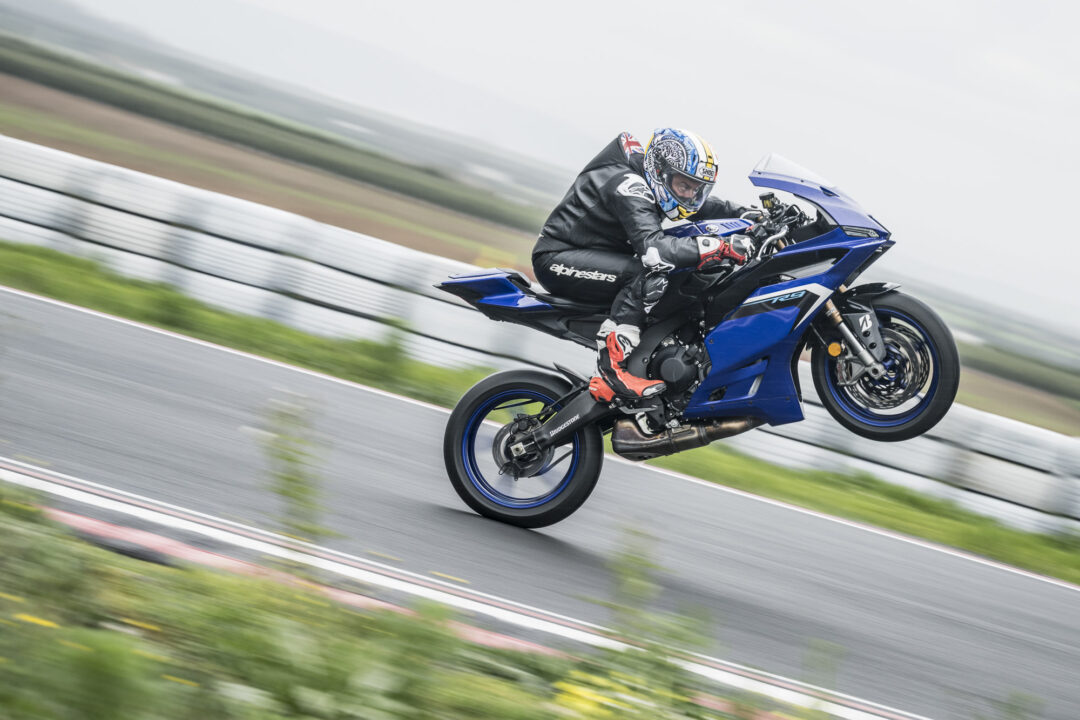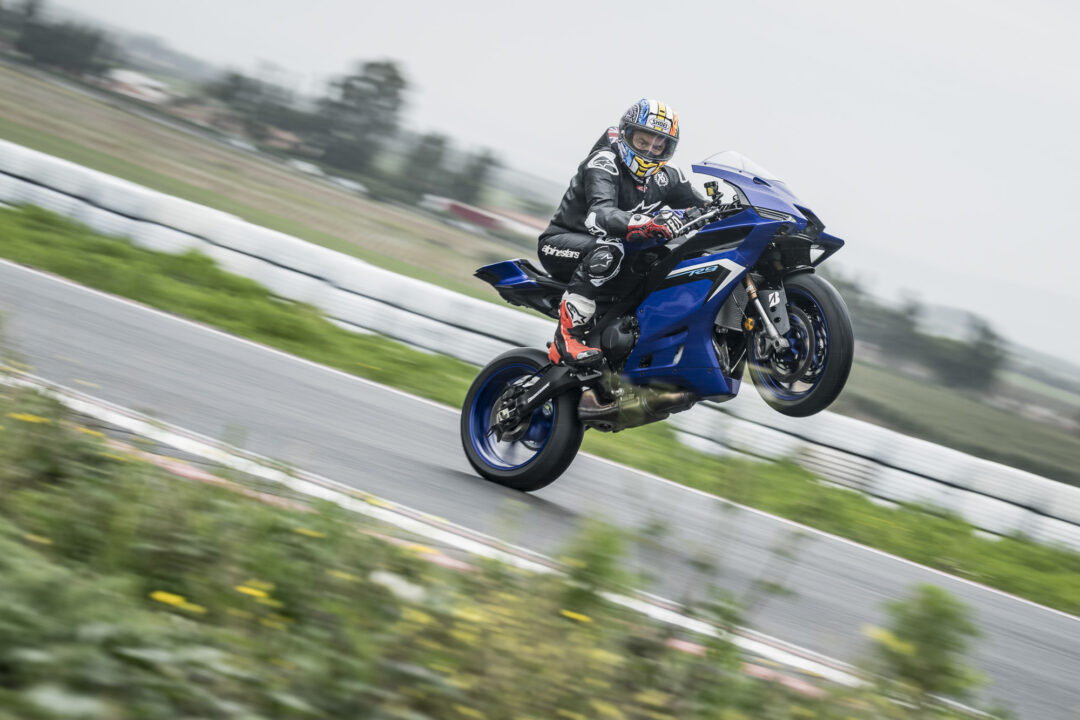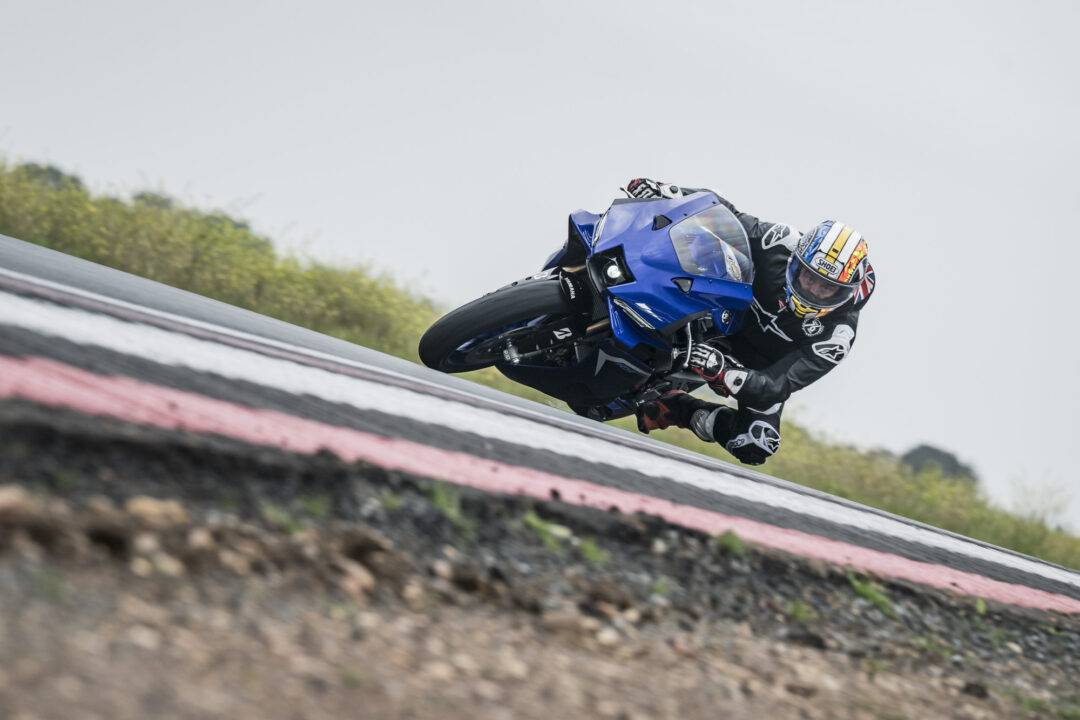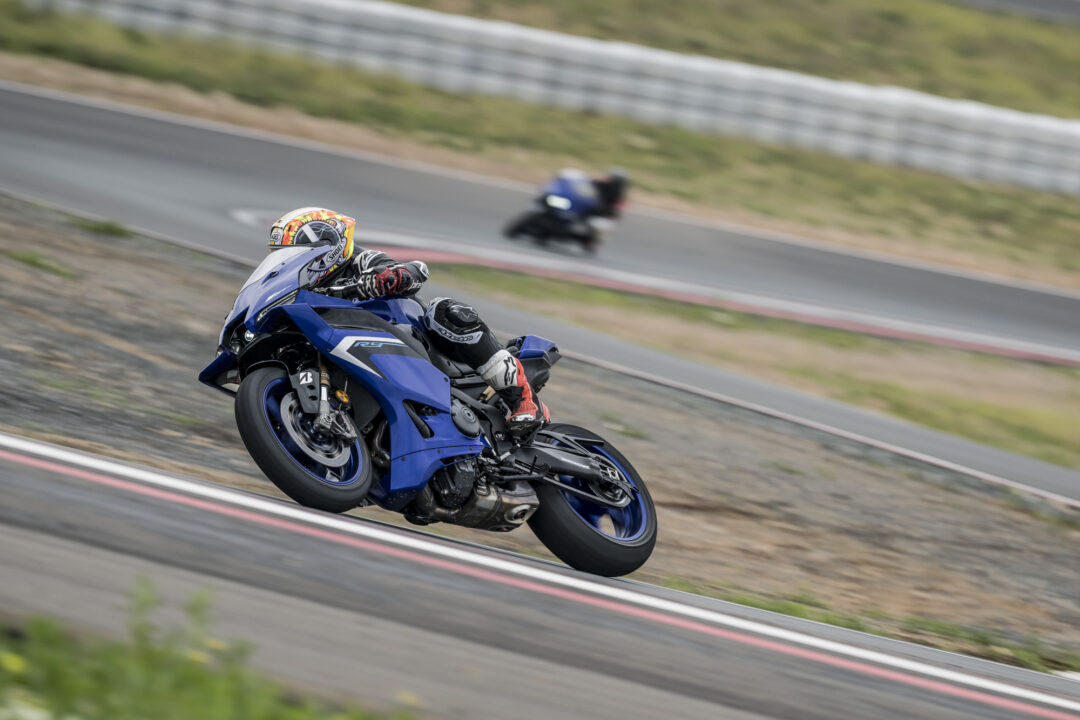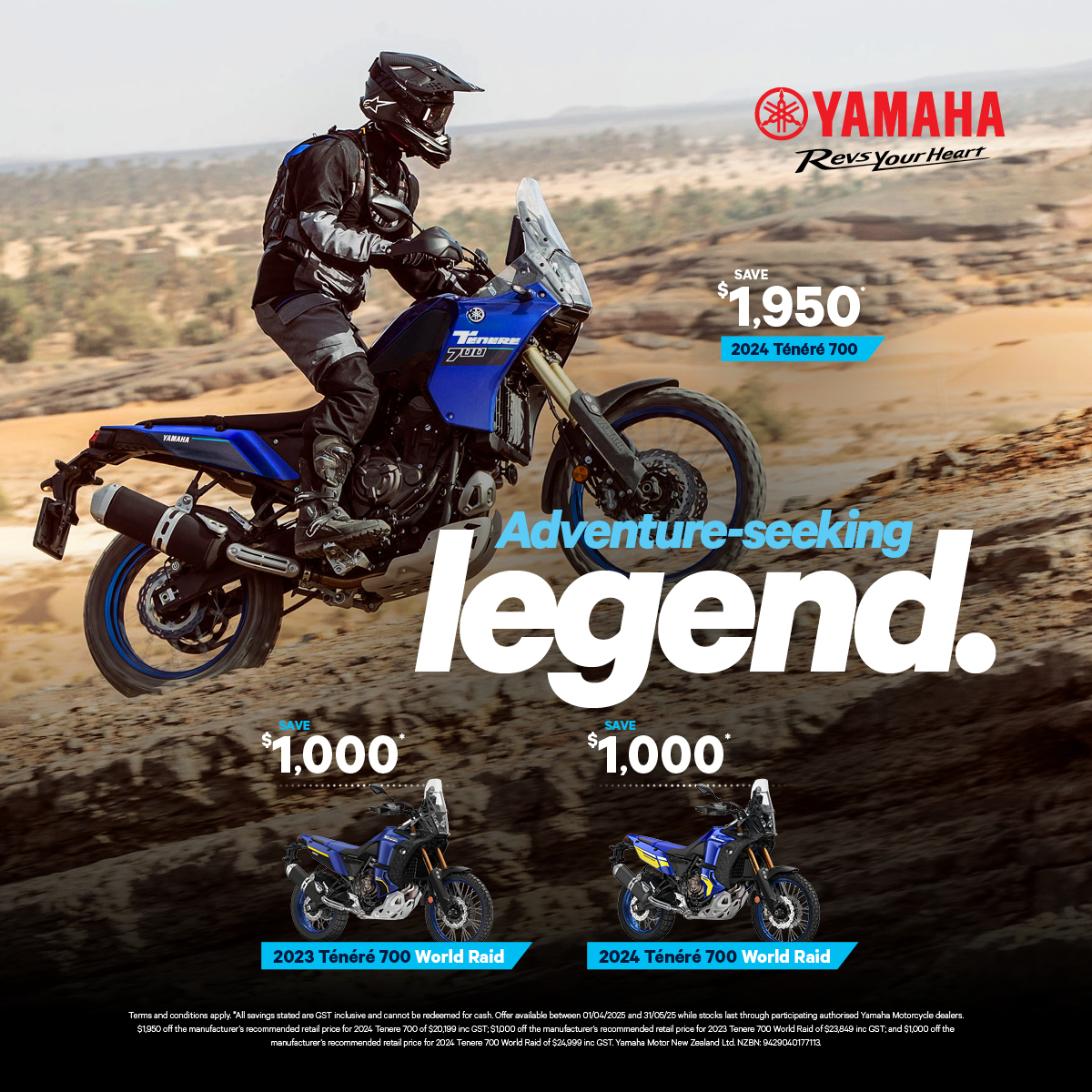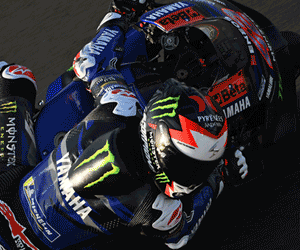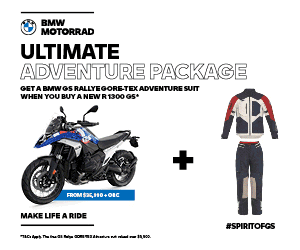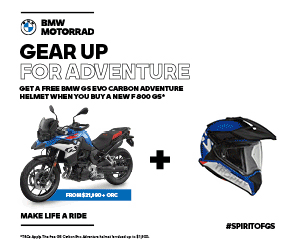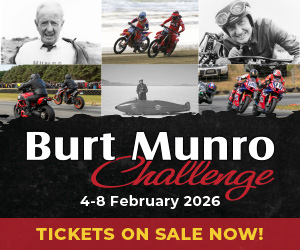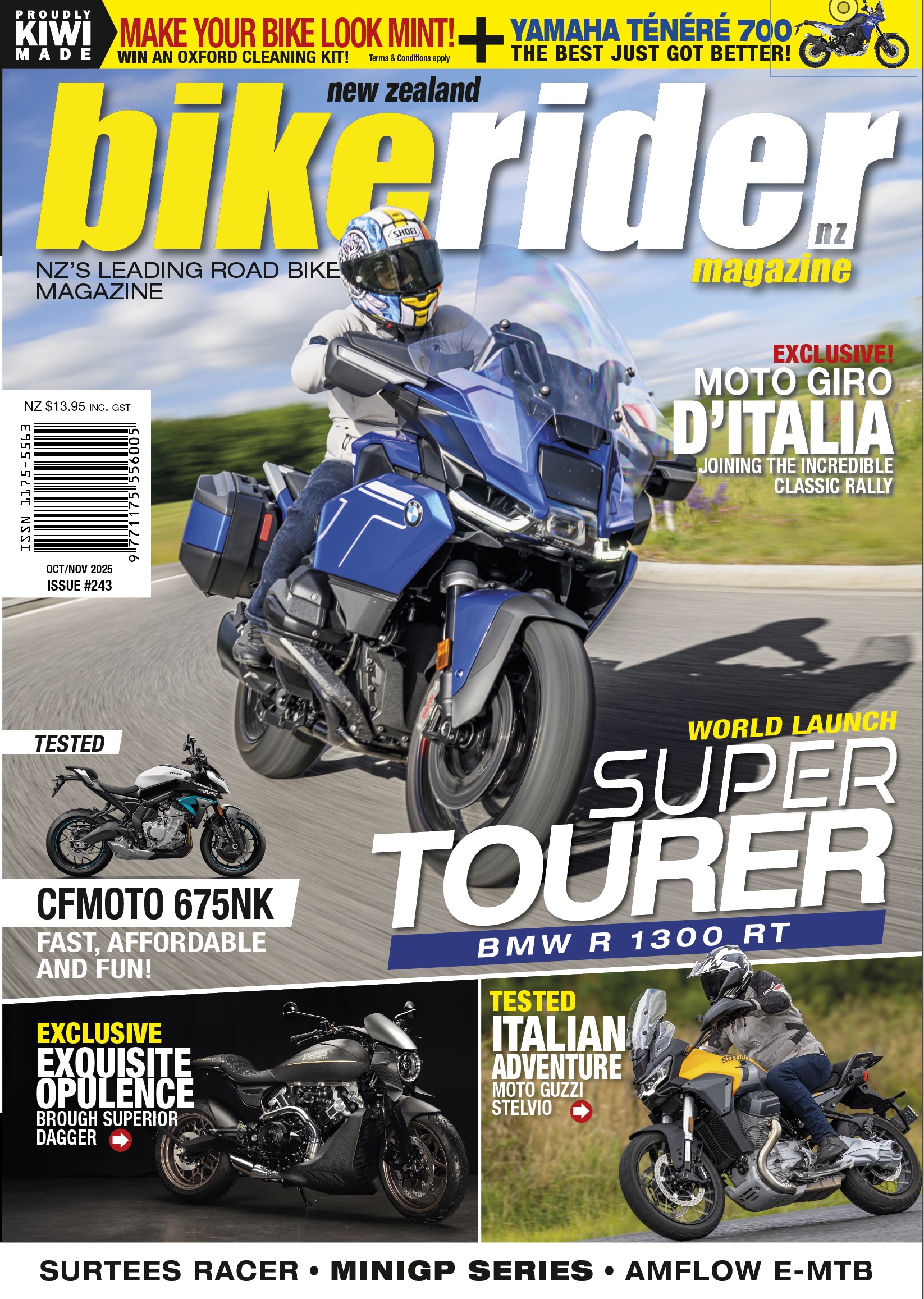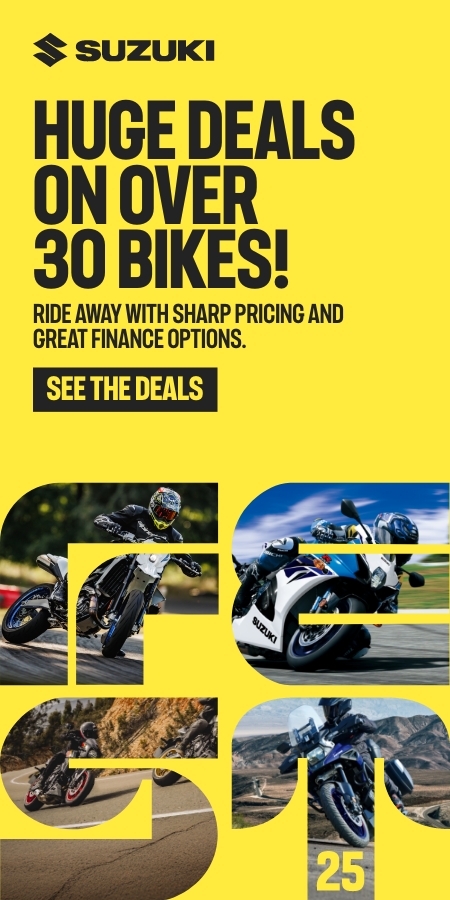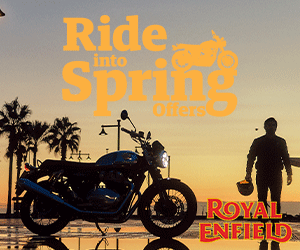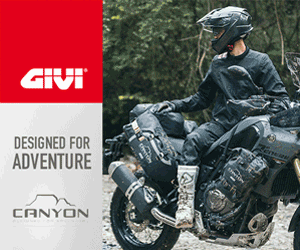- Yamaha has re-entered the middleweight Supersport class with the all-new R9, powered by a 890cc CP3 triple engine.
- The R9 isn’t just a faired street bike; it features a new Deltabox frame, top-tier Brembo brakes, and a six-axis IMU with lean-sensitive rider aids.
- The bike delivers track-ready performance with a more accessible, forgiving, and fun-to-ride character than a traditional supersport machine.
Yamaha has just launched the third machine to be built around their potent 3-cylinder CP3 engine. But unlike the MT variants, the new YZF-R9 is more closely related to their four-cylinder superbikes than it is to the naked roadsters. After a ton of anticipation and a last-minute venue change, we finally got to ride it in Spain.
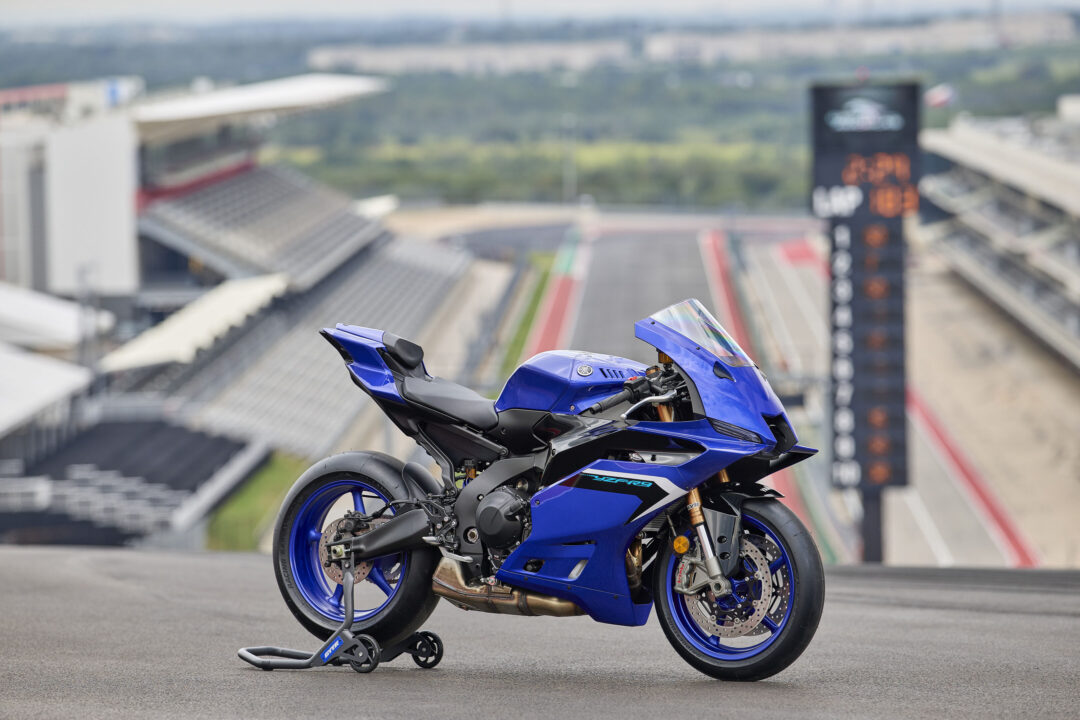
The middleweight SuperSport category is heating up once again, and Yamaha has re-entered the race with the all-new R9. Powered by the familiar 890cc CP3 triple, the R9 has already proven its worth with a WSS win at Phillip Island and a competitive price of $23,999, which is sure to put rivals on high alert.
While the R7 and R3 share many components with their naked streetbike siblings, the R9 represents a significant step up. This bike features a brand-new Deltabox frame, updated chassis geometry, fully adjustable KYB suspension, a sophisticated six-axis IMU, lean-sensitive ABS, and top-of-the-line Brembo Stylema calipers. All of this is wrapped in Yamaha’s most aerodynamically efficient bodywork to date.
The R9 doesn’t replace the R6 or R1, which will remain available in select markets (alongside the GYTR variants). Instead, the R9 offers a new blend of track-ready performance with real-world road usability. Yamaha claims it merges “pure sports performance” with approachability and the core DNA of the R-series. The SuperSport class is officially back, and we couldn’t wait to test Yamaha’s latest contender. But when a flash flood turned our planned venue at Jerez into a swimming pool, we had to relocate overnight to the track at Seville. Despite the chaos, Yamaha made it happen, giving us a full day to put the R9 through its paces on the circuit.
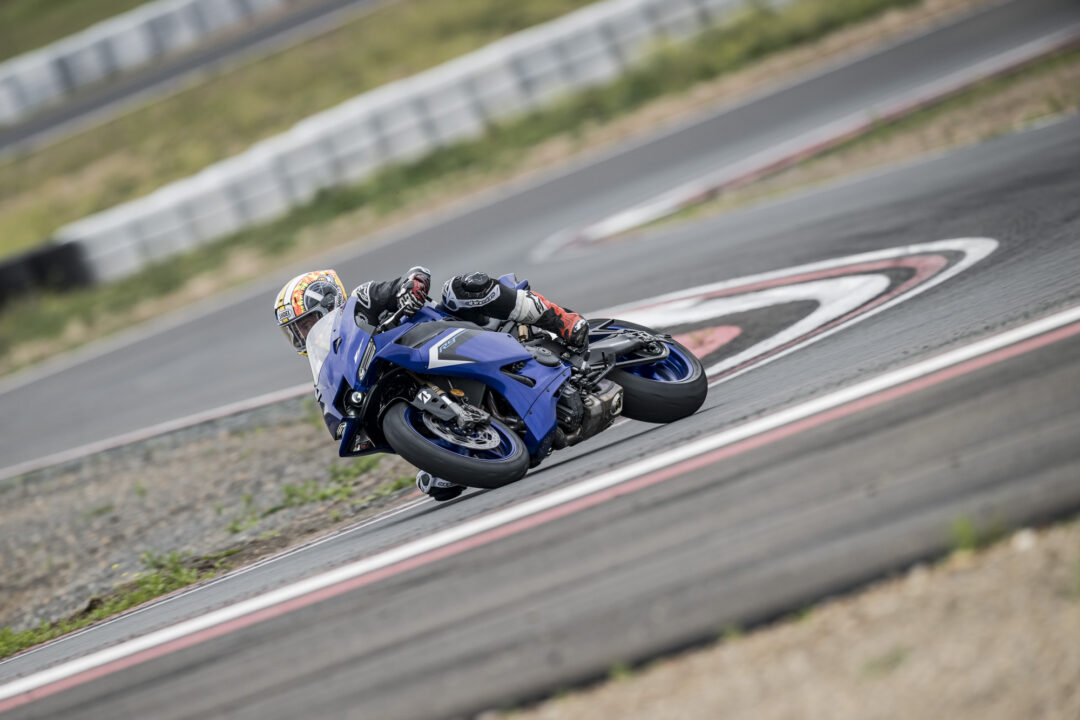
R9 Tech: What’s New and Different?
The new R9 has been met with a huge amount of anticipation—and for good reason. Yamaha has a deep history in this class, from the FZ600 to the legendary YZF-R6. Now, they’ve returned with a modern twist: the R9, featuring the potent CP3 triple and a price tag just under $24k.
It would be easy to assume the R9 is simply a faired MT-09, much like the R7 is to the MT-07. But this is a fundamentally different machine. While it does share the CP3 engine, almost every other component is new. The aluminium Deltabox frame is a bespoke design, 10kg lighter than the MT’s, with sharper geometry and increased rigidity. The final drive gearing has been changed from 16/45 to 16/43 to better suit the R9’s track-focused character and give it a higher top speed. With a claimed wet weight of 195kg and an estimated dry weight of 179kg, it’s exceptionally light for its class.
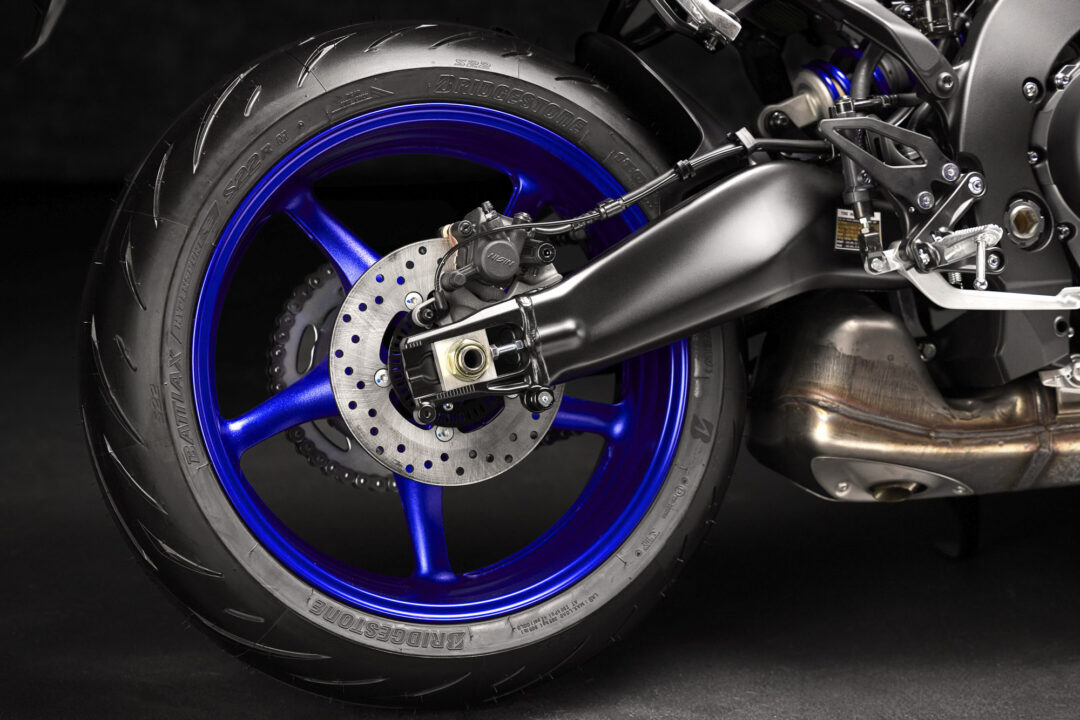
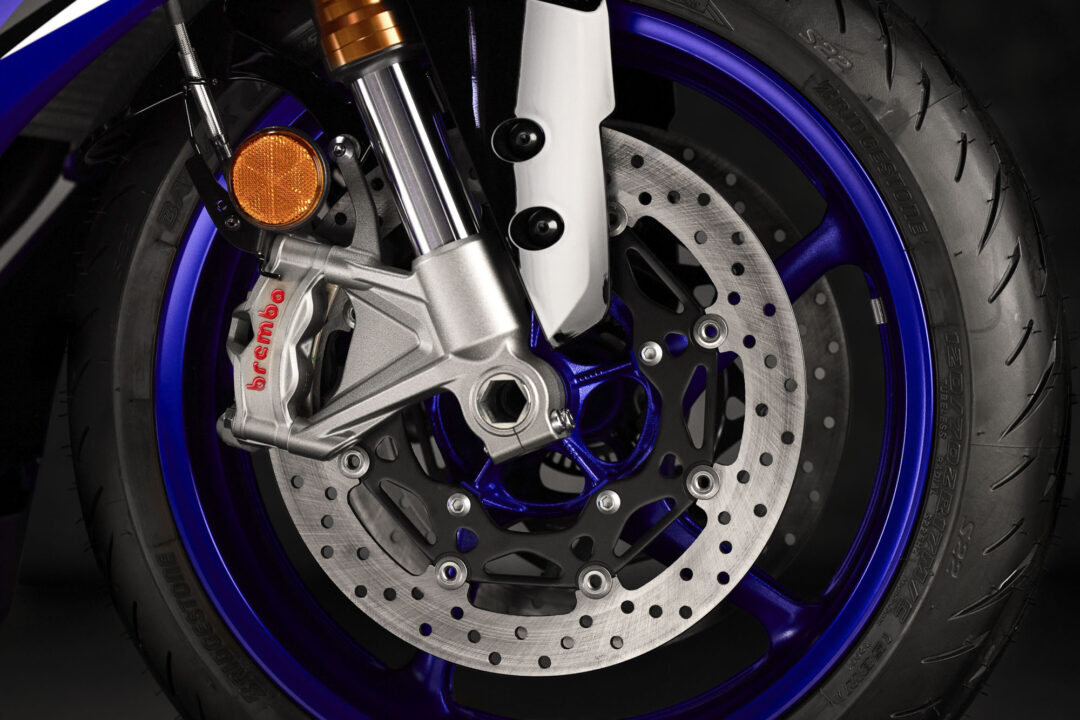
The chassis is supported by fully adjustable KYB suspension at both ends, and the braking is handled by premium Brembo Stylema calipers biting on 320mm front discs. The technology package is also a massive upgrade, including a six-axis IMU with lean-sensitive rider aids, cornering ABS, multiple power and ride modes, and a sleek new 5-inch TFT dash with connectivity and a dedicated track display. Aerodynamics were a key focus, with Yamaha claiming this is their most aero-efficient bodywork ever, complete with subtle, integrated winglets.
Despite its track-ready credentials, Yamaha maintains the R9 is still very capable on the road. As we mentioned, it’s not designed to replace the R6 or R1, and those track-only GYTR versions will still be sold in some markets. The R9 is meant to be a bridge between road and circuit—a true all-rounder in the modern SuperSport space. The original launch plan included both a road ride and a track session at Jerez, but a torrential downpour forced us to relocate to Seville’s track overnight. I had recently ridden a Ducati Panigale V2 S there, which made for a great direct comparison. Despite the logistical nightmare, Yamaha pulled it off, giving us a full day on the track.
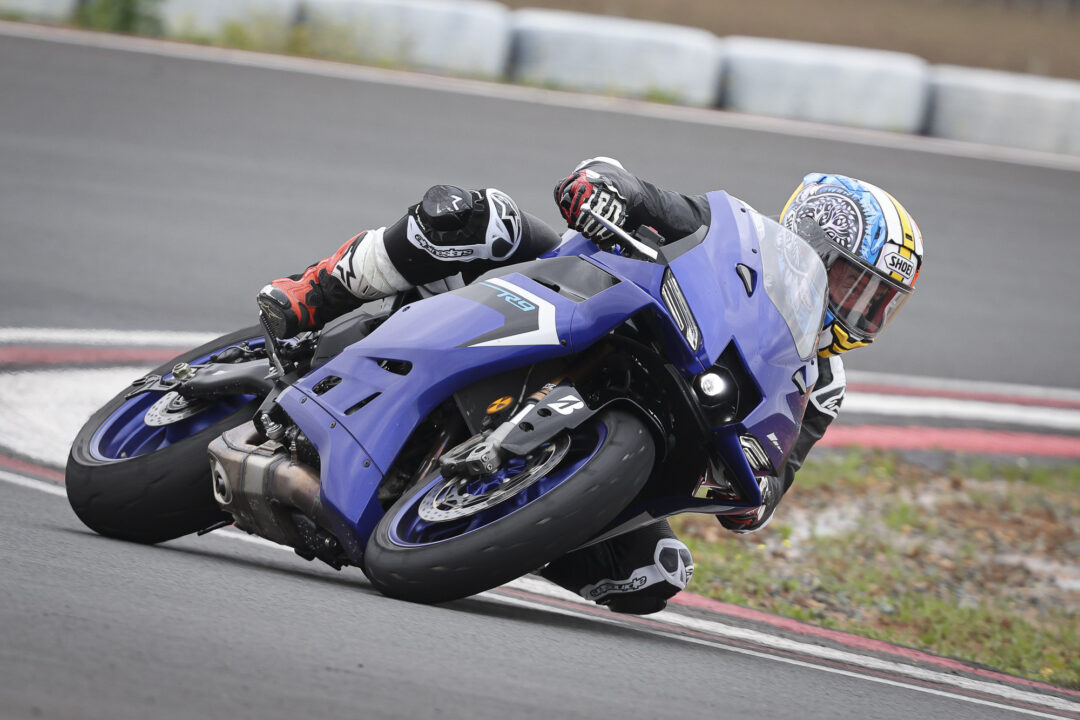
Riding the R9: How Does it Feel on the Track?
Even with a few damp patches on the track, the R9 felt perfectly at home on the standard Bridgestone Battlax RS11 road tyres. With the mirrors and number plate removed, the bike looked every bit the part of a dedicated race machine. Considering the competitive price, it’s impressive to see how many high-spec components Yamaha has included.
The seat height is lower than the R7, and Yamaha claims the ergonomics are less aggressive than the R6. However, to me, the riding position felt very similar to the R6. The 14-litre tank is a familiar, confidence-inspiring shape. I set the adjustable footpegs to the high position and switched to a race-pattern gearshift. The new 5-inch dash is clear and simple to navigate, offering multiple themes, including a track-specific layout. The switchgear is the same as on recent Yamaha models, and even cruise control comes standard—a surprising but welcome feature on a bike this focused.
For our test, Yamaha disabled the ABS, as a dedicated Race ABS setting isn’t available like on some competitors (e.g., Ducati). I chose one of the pre-set track modes optimised for the damp conditions, which felt similar to the standard Sport mode—offering a great balance of support and safety.
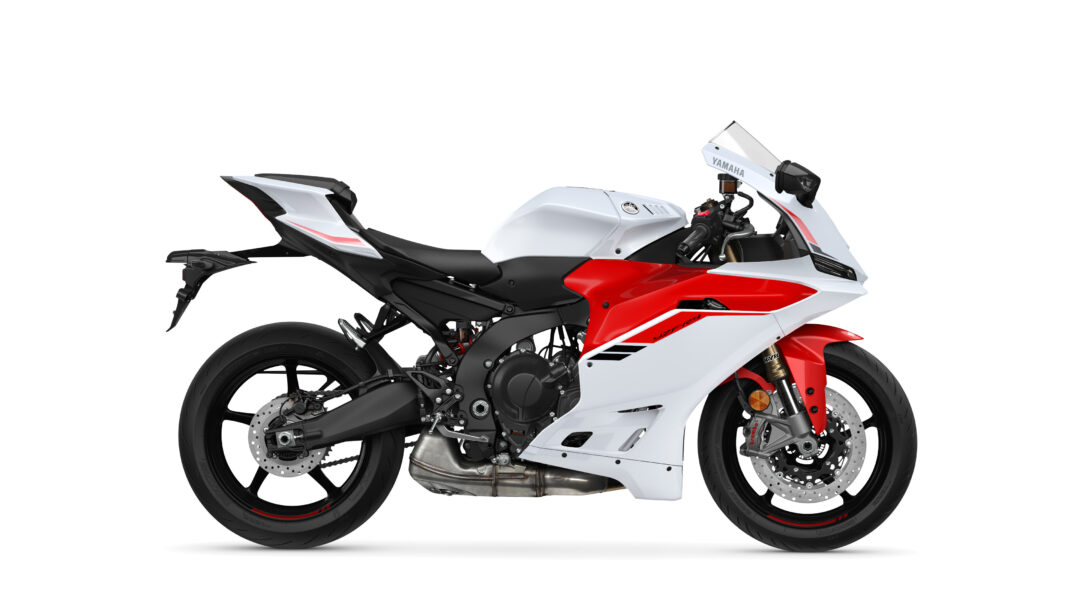
My first few laps on the R9 felt instantly familiar, much like riding an R6, but with a more relaxed feel and that lovely triple-cylinder engine note. The ergonomics are committed without being extreme, with low clip-ons that put you in a very aggressive stance. You feel like you’re sitting in the bike, and the chassis communicates every detail through the KYB suspension and RS11 tyres.
While the R6 demands high revs and precise inputs, the R9 is far more forgiving. The CP3 triple delivers torque everywhere, allowing you to drive hard out of corners even if you’re in the wrong gear. That accessible torque makes it a perfect bike for new riders on the track or seasoned riders learning a new circuit. It’s fun and unintimidating.
With the optional GPS and Yamaha’s new Virtual Pit Board (VPB), every lap became a challenge to beat my personal best. The third-generation QSS quickshifter was flawless, even at high RPM. The front-end feel is superb—a classic Yamaha trait that allows you to trail brake deep into corners without unsettling the chassis. Despite being on road tyres with no ABS, the bike never felt unstable or sketchy. The flat tank top makes it easy to hang off, and while taller riders might prefer the lower peg setting, the high position gave me plenty of ground clearance. The chassis provided constant feedback through Seville’s flowing corners, encouraging me to push harder on every lap.
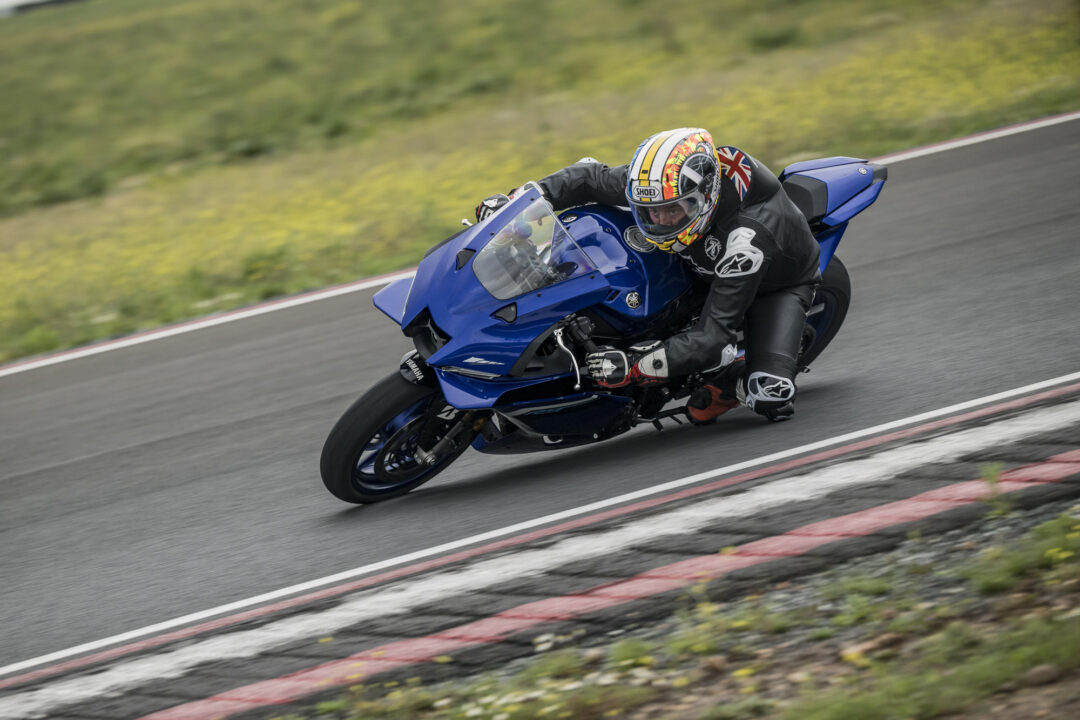
R9 Engine: Supersport Torque vs. Superbike Scream
The R9 truly excels on corner exit. Unlike a high-revving R6 or a powerful R1, the R9’s broad torque allows you to get on the gas early without a second thought. You don’t need perfect throttle control or ideal gear selection; it’s forgiving and playful, allowing you to ride fast without needing to be on your A-game at all times.
After about 20 minutes on the track, the RS11 tyres started to show wear, but the feedback from the bike remained clear. I did find myself hitting the rev limiter quite a bit—this is not a bike you can rev to the moon. Peak power arrives around 10,000rpm, and the party’s over at about 10,500rpm. I often ran out of revs before the end of a straight or on corner exit.
Back in the pits, I stayed in Power Mode 2 but turned down the rider aids and disabled lift control to give myself more freedom. With the VPB showing live lap times, it was hard not to keep chasing quicker laps. Even as the pace increased, the handling remained sharp and predictable, especially at the front.
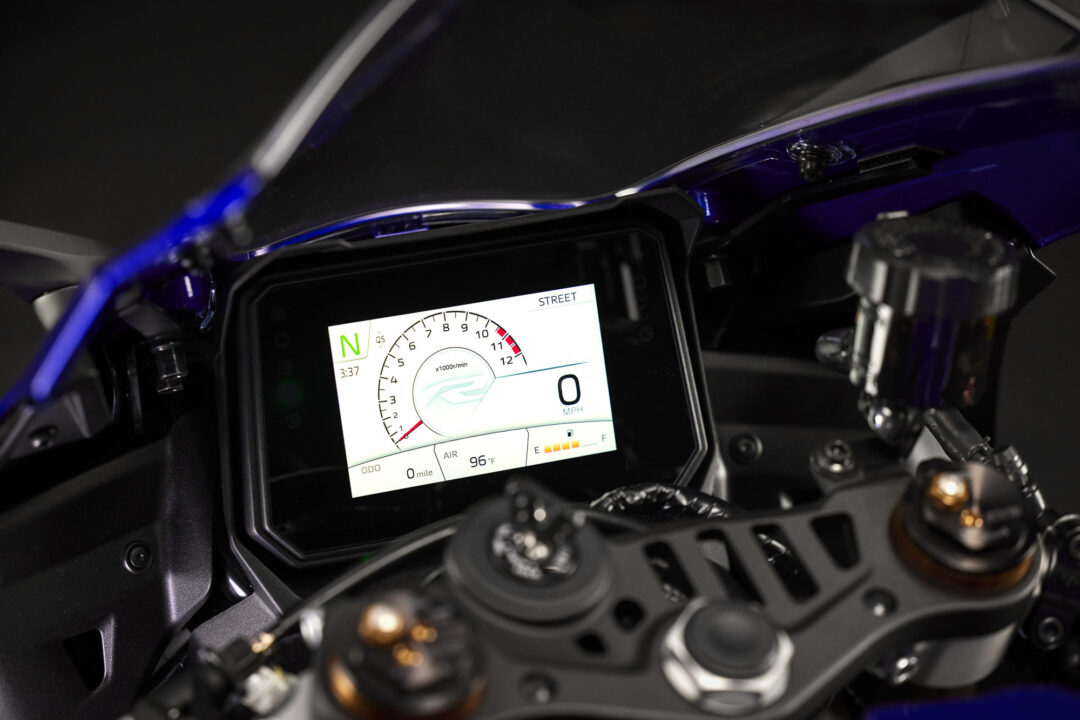
The final section of the Seville circuit is tight and technical, but the R9 handled it effortlessly. At 179kg dry, it’s incredibly flickable and easy to hustle. Though I would have preferred slightly wider handlebars for extra leverage, the bike’s focused ergonomics never felt overly demanding—it’s much less physically taxing to ride than an R6, even at a high pace.
The only minor letdown was the braking performance. The Brembo Stylema calipers felt a bit spongy under heavy braking, with some sponginess that didn’t quite meet my expectations. This could have been due to the road tyres, but with a proper race setup and track rubber, this should undoubtedly improve. Sadly, the weather cut our test short before we could ride the bike on slicks, but its potential is clear. The R9 is fast, easy, confident, and refined—everything a modern SuperSport should be.
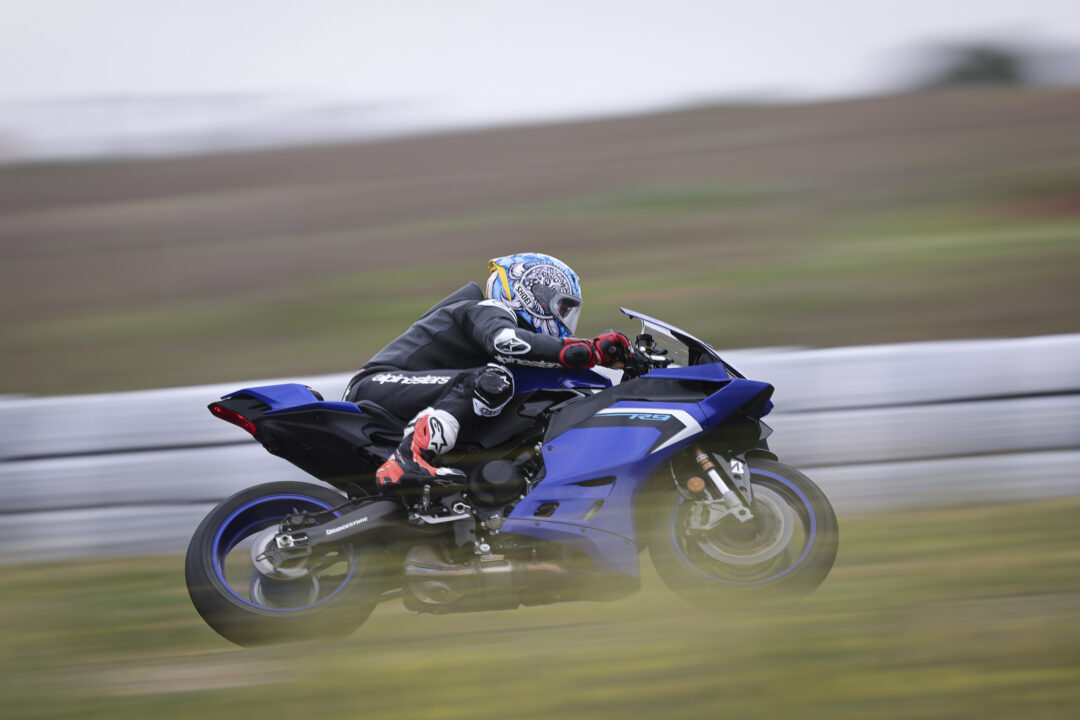
Final Verdict: The Best R-series for the Road?
The original Yamaha R9 launch at Jerez was a complete washout, but Yamaha’s swift decision to move the entire event to an untested track overnight was a massive gamble. Normally, manufacturers have days to fine-tune suspension settings and tyre pressures. But Yamaha bet on their new bike’s innate ability to perform, using only road-going rubber designed for longevity, not lap times. Thankfully, that gamble paid off, as the R9 performed impressively in the challenging conditions.
Running the R9 in its standard configuration proved how well Yamaha has set it up straight from the factory. The bike’s sublime chassis and excellent front end give it an R6-like feel, but with a more forgiving and approachable character. The engine’s delivery is more usable and less frantic than the R6, which might make it feel a bit slower, but the lap times told a different story. The only minor disappointment was the brakes, which lacked the sharp feel you’d expect from the Brembo Stylema calipers.
In essence, the R9 feels like a grown-up R6. It retains that light, taut, and accurate chassis with a confidence-inspiring front end but adds a more accessible engine, enhanced by cutting-edge electronics. This makes the R9 more approachable for a much wider range of riders. It’s already a proven winner on the track and looks fantastic. While we haven’t tested its long-term comfort or tank range, the R9 seems better suited for road use than the more track-focused R6. Time and miles will surely tell.
Words: Adam Child Pics: Ant Productions
Gallery
Specifications: Yamaha YZF-R9
Price: $23,999 ride away
ENGINE & TRANSMISSION
Type 890cc water-cooled, 4v per cylinder four-stroke, 3-cylinder
Bore stroke 78×62.1
Compression ratio 11.5:1
Power 87kw/117hp @ 10,000rpm (claimed)
Torque 93Nm/ 69 lb-ft @ 7,000 rpm (claimed)
Top speed 170mph (est)
Final Drive Chain
Transmission Six-speed Quick Shift up/down generation 2
Clutch Wet multiplate
CHASSIS
Frame Gravity-cast Deltabox aluminium
Front Suspension KYB 43mm, USD, fully adjustable,120mm travel
Rear Suspension KYB Single rear shock, fully adjustable 118mm travel.
Front Brakes 2 x 320mm discs, radially mounted Brembo Stylema caliper, cornering ABS
Rear Brake 220mm disc, single-piston caliper
Front wheel/tyre 120/70 X 17, Bridgestone RS11, 3.5 x 17
Rear 180/55 x17, Bridgestone RS11, 5.5 x 17
Wheels Lightweight 5-Spoke forged aluminium
DIMENSIONS & WEIGHTS
Seat height 830mm
Width 705 mm
Height 1180mm
Length 2070mm
Rake 23.4
Trail 94mm
Wheelbase 1420mm
Weight 195kg. (wet including fuel oil and fuel tank) 179kg (dry not official)
Ground clearance 140mm
Fuel capacity 14l
Fuel consumption 5.3l/100km 56.5mpg (claimed)
Rider aids 1-4 power modes, 1-9 traction control, slide control 1-3, lift control 1-3, Quickshifter 1-2, EBM Engine Brake Management 1-2, BC Brake Control on/off, BSR Back Slip Regulator on/off, LCS Launch Control 1-2, Rear ABS, on/off.
Rider Modes Sport, Street, Rain. Plus 2 custom modes and 4 track modes
BUSINESS END
Warranty 24 months unlimited mileage
Colour options Icon Blue. Tech Black
Contact www.yamaha-motor.co.nz

